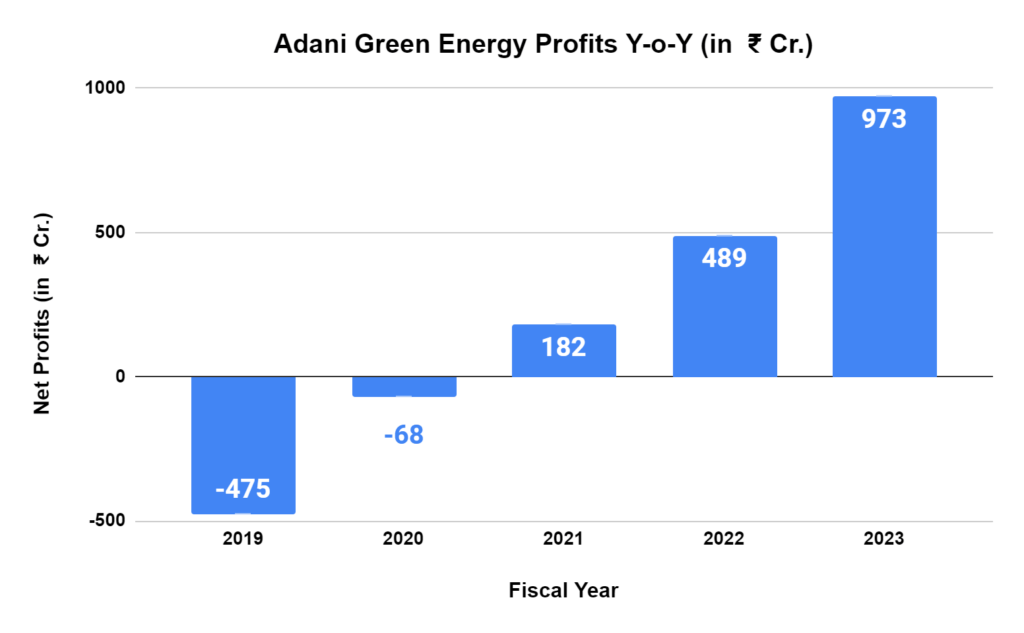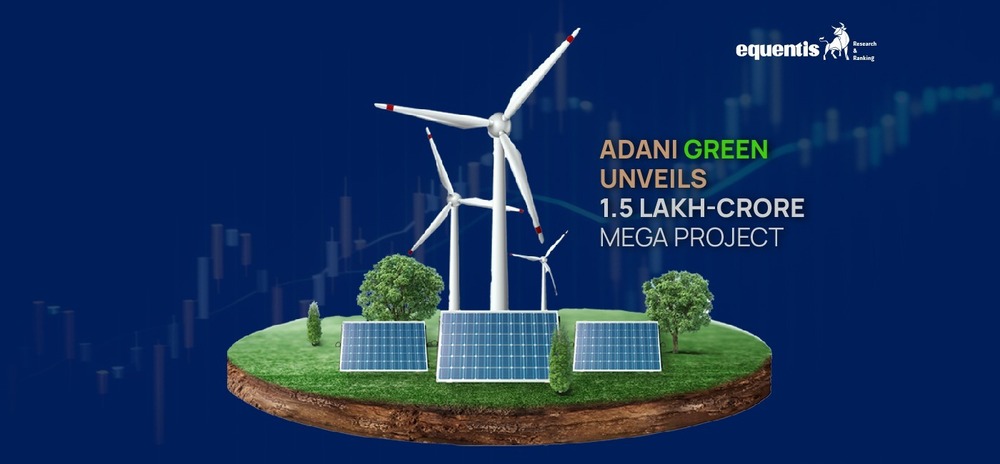Have you noticed the buzz surrounding Adani Green lately? Search terms like “Adani Green Screener,” “Adani Green Investment,” and “Adani Green Renewable Energy” are popping up everywhere. What’s driving all this interest? The answer lies in a record-breaking vision that’s captured the imagination of the clean energy world. Let’s find out the details behind this exciting development.
Adani Green is investing a staggering ₹1.5 lakh crore (US$18.7 billion) to build the world’s largest renewable energy project at Khavda, Gujarat. That’s not all – the total Adani Group investment in renewable energy and manufacturing capacity by 2030 is poised to reach a whopping ₹2.3 lakh crore (US$28.8 billion). That’s a serious commitment to clean energy!
First, based on data sourced from Adani Green Screener records, let’s examine how the company has performed over the years.

Beyond breaking records
The project can potentially be a game-changer for India’s clean energy goals. The Indian government has set ambitious targets for renewable energy capacity, and Adani Green’s project is a significant step towards achieving them. The project can help reduce India’s reliance on fossil fuels and curb greenhouse gas emissions by providing a substantial amount of clean energy.
What it means for the renewable energy landscape.
Currently, the Khavda project boasts a capacity of 2 GW. The planned expansion is a monumental leap, multiplying its power generation by fifteen times. To put that in perspective, 30 GW is enough to meet the electricity needs of roughly 30 million households – a significant chunk of India’s population.
Why Khavda?
This arid region in Gujarat boasts exceptional solar irradiance – meaning it receives high sunlight throughout the year – making it perfect for solar power generation. The strong and consistent winds blowing through the area are ideal for wind turbine operations. Khavda’s location also provides easy access to the national grid, ensuring efficient transmission of the generated clean energy.
The sheer scale of the project is mind-boggling. The Khavda site spans a massive 538 square kilometers – an area five times the size of Paris! To put it another way, it’s almost as big as Mumbai, India’s financial capital. This ambitious undertaking will require significant financial resources and innovative solutions to manage land use, transmission infrastructure, and a complex logistics network.
Aiming for a Pan-India Push
While Khavda takes center stage, Adani Green’s vision extends beyond this project. The company plans to invest another ₹50,000 crore (US$6.2 billion) in building 6-7 GW of similar renewable energy plants across India. This multi-pronged approach ensures a wider geographical reach and diversified renewable energy portfolio.
Implications for the Industry
Adani Green’s aggressive investment strategy is bound to send shockwaves through the renewable energy sector. Here’s what we can expect:
- Increased Competition: This massive project sets a high bar for competitors, pushing them to innovate and expand their capacities. This ultimately benefits consumers by reducing prices and increasing access to clean energy.
- Boost for Manufacturing: A project of this scale necessitates a robust domestic manufacturing base for solar panels, wind turbines, and other essential equipment. This can create a ripple effect, stimulating growth in the Indian renewable energy manufacturing sector.
- Job Creation: The construction and operation of these large-scale projects will create significant job opportunities across various skill sets. This can be a boon for local communities and the overall Indian economy.
Challenges on the Horizon
Despite the project’s immense potential, there are hurdles to overcome:
- Land Acquisition: Securing such vast tracts of land can be complex, requiring careful consideration of environmental and social impact.
- Transmission Infrastructure: Ensuring efficient transmission of the generated power to end users requires a robust and well-developed grid infrastructure. Upgrading the existing grid or building new lines might be necessary.
- Environmental Impact: Large-scale solar and wind projects can have ecological consequences. Careful planning and responsible execution are crucial to minimizing any negative environmental impact.
The Promise of A Green Future
Adani Green’s ambitious project is a significant leap forward for India’s renewable energy goals. It has the potential to revolutionize the country’s energy landscape, create jobs, and propel India towards a cleaner and more sustainable future. While challenges remain, the potential rewards are undeniable. This project is worth watching closely; it will be fascinating to see how it unfolds in the coming years.
*Disclaimer Note: The securities quoted, if any, are for illustration only and are not recommendatory. This article is for education purposes only and shall not be considered as recommendation or investment advice by Research & Ranking. We will not be liable for any losses that may occur. Investment in securities market are subject to market risks. Read all the related documents carefully before investing. Registration granted by SEBI, membership of BASL, and certification from NISM in no way guarantee the performance of the intermediary or provide any assurance of returns to investors.
How useful was this post?
Click on a star to rate it!
Average rating 5 / 5. Vote count: 2
No votes so far! Be the first to rate this post.
I’m Archana R. Chettiar, an experienced content creator with
an affinity for writing on personal finance and other financial content. I
love to write on equity investing, retirement, managing money, and more.
-
Archana Chettiarhttps://www.equentis.com/blog/author/archana/
-
Archana Chettiarhttps://www.equentis.com/blog/author/archana/
-
Archana Chettiarhttps://www.equentis.com/blog/author/archana/
-
Archana Chettiarhttps://www.equentis.com/blog/author/archana/

